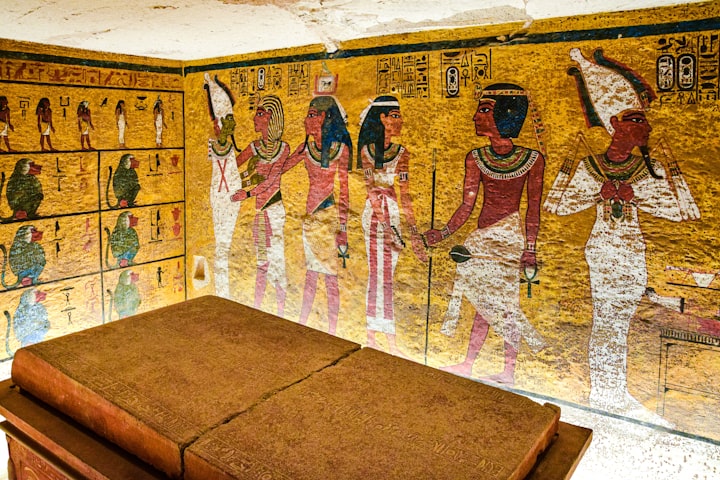The Curse of Tutankhamun's Tomb: Fact or Fiction?
Mysteries

The Curse of Tutankhamun's Tomb: Fact or Fiction?
For centuries, tales of curses and supernatural retribution have captured the human imagination. One of the most famous curses in history is linked to the discovery of King Tutankhamun's tomb in Egypt's Valley of the Kings. Tutankhamun, often referred to as King Tut, ruled during the 18th dynasty of ancient Egypt (c. 1332–1323 BC). His relatively short life ended at the age of 19, and his tomb lay undisturbed for over 3,000 years. In 1922, when British archaeologist Howard Carter and his team finally opened the tomb, it marked the beginning of a mystery that continues to fascinate people to this day – the curse of Tutankhamun's tomb.
The Curse Unveiled:
When Tutankhamun's tomb was unsealed, it revealed a magnificent treasure trove of artifacts, including the iconic golden mask, jewelry, statues, and other precious items. Alongside the treasures, however, were inscriptions and warnings of a curse. It was a message from the past, a spell aimed at those who dared to disturb the resting place of the young pharaoh. The curse was said to be a manifestation of the anger and vengeance of the ancient gods, guarding Tutankhamun's final abode.
The words inscribed on a tablet in the tomb, often referred to as the "Curse of the Pharaoh," included ominous phrases like:
"*Death shall come on swift wings to him who disturbs the peace of the king.*"
"*I will kill all those who cross this threshold into the sacred precinct of the king and I will cast them into the water of the holy canal.*"
The Discovery of the Curse:
When Carter's team discovered these inscriptions, it added an element of intrigue to the already spectacular find. Soon after the tomb's opening, a series of unexplained deaths and misfortunes among those associated with the excavation seemed to validate the existence of the curse. The first to fall victim was Lord Carnarvon, the financial backer of the expedition. He died in 1923 due to an infected mosquito bite, causing many to speculate that the curse had claimed its first victim. Several other members of the team also suffered untimely deaths, further fueling the curse's legend.
Fact or Fiction:
Skeptics have long dismissed the notion of a curse as superstitious nonsense, attributing the deaths to unrelated illnesses, accidents, or the risks associated with early 20th-century archaeological work. While the concept of a mummy's curse aligns with the portrayal of ancient Egyptian curses in popular culture, the existence of a supernatural curse has been widely challenged by experts.
Those who defend the curse's authenticity point to the deaths of key individuals linked to the tomb's opening, suggesting a pattern. However, such patterns can also be attributed to the statistical likelihood of health issues and accidents occurring within a group of people working in the harsh conditions of Egypt.
The fascination with the curse persists, even after the deaths have been reasonably explained. Stories of mummies' revenge have fueled Hollywood films, novels, and documentaries, perpetuating the enigma of Tutankhamun's curse. It has also sparked debates within the scientific community about whether psychological factors can trigger psychosomatic illnesses and whether the belief in the curse could have influenced the affected individuals.
In the end, whether the Curse of Tutankhamun's Tomb is fact or fiction remains a matter of personal belief. The legend endures as part of the enduring mystique surrounding one of history's most famous archaeological discoveries. Tutankhamun's tomb continues to be a source of wonder and curiosity, with the curse adding an extra layer of intrigue to the ancient world of the pharaohs.
In conclusion, the Curse of Tutankhamun's Tomb is a captivating mystery, a story of curses, unexplained deaths, and the enduring power of human belief in the supernatural. Whether the curse was responsible for the deaths or not, it remains an integral part of the fascination with the boy king and his timeless legacy.





Comments (1)
wow this is great job you can also join my friends and read what i have prepare for you